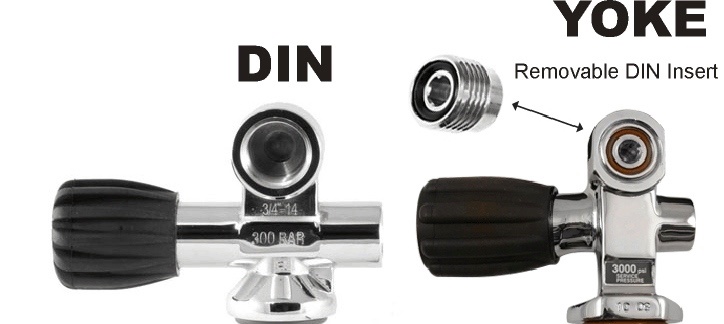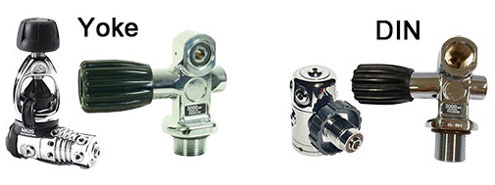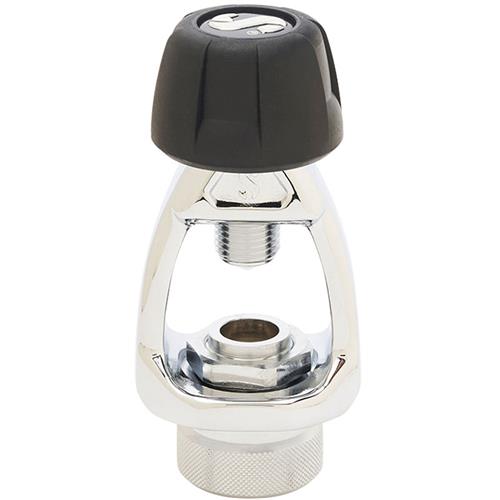It is an indisputable fact that DIN is better than Yoke (also sometimes called "A clamp") in all measurable ways. But that does not make it the valve of choice in America and surrounding dive locations. Just like Imperial vs Metric systems...best doesn't always mean most used.
How They Work
There are two parts that must match together to deliver breathing gas from the tank to your face. The tank valve and the 1st stage regulator. The 1st stage regulator is either DIN or Yoke... it can not be both. Some manufacturers offer conversion kits, but they are not hot swapable. Some tank valves, known as "Pro" valves, can be swaped from DIN to Yoke and back using a screw in/out DIN insert.
To make it even more confusing....DIN can be safely used on higher pressure tanks than Yoke, which means not all tanks can be hot swappable from DIN to Yoke. Aaaaaargggggggh!!!
The Yoke valve is attached to the 1st stage by unscrewing the knob on the 1st stage, passing the yoke valve through the clamp and then screwing the knob down so the tank valve is captured. Note the O-ring is located on the tank side of the connection. This will show up later as a Con.
The DIN valve is attached by using a threaded screw in. This is one of the reasons why the DIN connection is considered superior as a screw in connection is more secure than a "friction" fit Yoke valve. You will not find ANY technical divers using Yoke.

Pro vs Con
The only pro for Yoke...literally...is that lots of rental tanks in the United States / Mexico and the Caribbean are Yoke and if you have DIN regulators then you'll need to make sure the rental place can support a DIN regulator before you show up. It's 99.9% probable they can, because they are using "Pro" valves...but it would suck if you got the 0.1% that couldn't. If you are concerned about this, you can purchase/carry a DIN to Yoke adapter.
So why DIN over Yoke?
- It's a more secure connection than Yoke
- It "sticks out" less than a Yoke so less to get snagged on things
- The O-ring is on the regulator side not the tank side. Which means you do not have to trust the rental tank to have a good O-ring. It's your regulator...make sure the O-ring on your regulator is good. That is fully in your control. When I was in Mexico diving a Yoke regulator with rental tanks, I had to replace 50% of the O-rings on the rental tanks I was given. Literally 7 out of 14 where bad/leaking. The boat ran out of spare O-rings by the end of the week and we had to dip into my save-a-dive kit.
So Which One Should I Have?
- If you are renting tanks for recreational dives only and mostly diving in America, Mexico and the Caribbean...then Yoke is perfectly fine.
- If you are buying your own tanks, possibly going to be doing technical dives in the future and you'll be traveling outside of the Americas...DIN is what you want.
